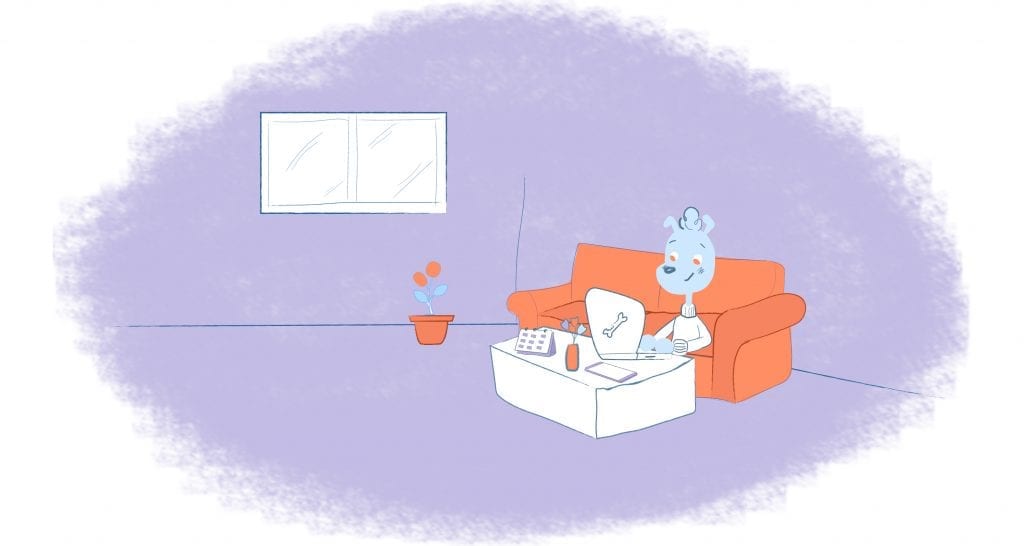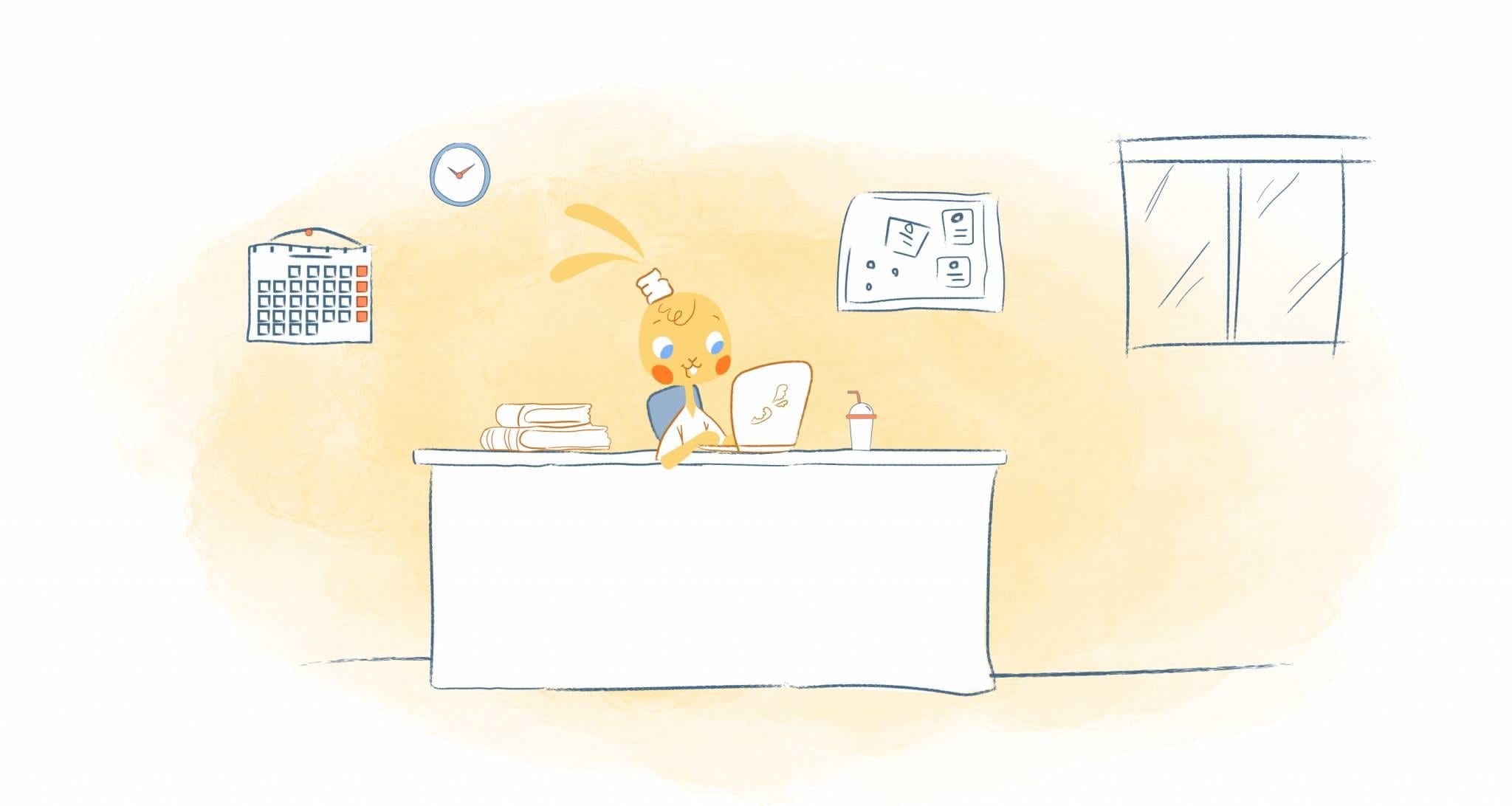Before COVID-19 ravaged the world, 86% of the 151 million American workers surveyed for the 2018 American Community Survey said they drove to work each day. While the pandemic put this to a screeching halt, it has continued even into 2023. With a preference for working from home, we encourage remote employees to create a fake commute if they plan on continuing WFH for the good of their mental health.
“Before quarantine, we’d have time to go to and from our offices,” said Jamie Goldstein, PsyD, therapy experience lead at Coa. “We built in time for lunch hours and even travel time to go from one meeting or appointment to the next. These moments of physical transition allowed us to move between our roles as parents, project managers, partners, and more.”
“As painful as the commute can be for some, it gave us time to decompress from the workday and prepared us to be present for our loved ones when we got home,” adds Dr. Nicole B. Washington. “Without it, some people are really struggling with turning off work, and they are working into the evening, often very late.”
The answer? Take a “fake commute” every day.
What exactly is a fake commute?
A “fake commute” is a ritual that you do before the start and end of your workday. One example is how Dr. Damien Lyons, a lecturer in Sydney, spends his mornings. He buttons up a work shirt, jumps in the car, switches on the radio, and drives for 10-minutes on a set route.
“It sounds a bit ridiculous, but the point is that once upon a time, I used my commute to mentally prepare for the day,” he explains. “The time to walk out of the house and leave behind whatever was going on.”
For Marianna Hewitt, the co-founder of Summer Fridays, it’s taking a short walk in the morning and evening to signify what would have been her commute. And, for Ian Silvera, account director of Newgate Communications, it’s sitting on a park bench to people-watch.
Whatever you choose to do, a fake commute can be used to separate your work and personal lives. It also gives you a chance to get amped for the workday or unwind before settling in for the night. It’s also important for our mental health.
“The walls between work and non-work have completely disappeared for us. So now we have to find ways, either psychologically or otherwise, to try to build up those walls again,” says David Zweig, professor at the University of Toronto’s school of management.
“We don’t have a way to psychologically separate or recover from the demands at work,” he adds. “In the morning, we don’t have time to think about how we are going to approach our day because we are already in the thick of it. And in the evening, when we’re done, we don’t have the time to switch off and think about something other than work.”
That’s great, but how can you create a fake commute?
1. Maintain your regular sleep schedule.
“With so much uncertainty currently, I know keeping any kind of schedule is hard,” writes Dr. Michael Breus. “You might be still adjusting to working from home or trying to find a way to help your kids keep up with their schoolwork while not going to school. It’s a major challenge.”
“Still, if you can find a way to keep a regular sleep schedule, it can pay major dividends for your health — especially when it comes to your heart,” he adds. “With enough to worry about right now, the last thing you need is to increase your risk of running into cardiovascular problems.”
Also, irregular bedtimes have been found to lead to obesity, diabetes, stroke, and high blood pressure. It can even negatively influence your mental health. And, a good night’s rest is vital for concentration and productivity.
You don’t exactly have to follow the sleep pattern you did before COVID. If possible, you should follow your own circadian rhythm. In either case, follow a consistent and regular sleep schedule — even on the weekends.
However, make sure that you give yourself enough time between waking up and starting work to go on your “commute.” Even better? You should also leave a little bit of time for you to partake in your morning routine.
Related: The Best Mattresses of 2020
2. Follow the same commute times.
Let’s say that you used to leave your home at 7:30 am for a 20-minute commute. For your fake commute, you could go for a morning walk with your dog at the same time and duration. If you left the office at 4:30, then that’s when you could go for your afternoon walk before calling it a day.
Additionally, if you left work to go to your favorite deli or coffee shop for lunch at 11:30, then this is when you should continue to take your lunch break. And, just like the length of your morning and afternoon commute, if it took you 10-minutes to arrive at your favorite lunch spot, then you should also go for a 10-minute walk before eating.
3. Get dressed and walk out the door.
Why put on work-appropriate clothes? That’s easy. It delineates between work and home mode.
Furthermore, multiple studies show that what you wear matters. For example, take a look at a 2015 study by the journal Social Psychological and Personal Science. It was found that wearing formal attire can make you feel more, which will then spark creativity.
At the same time, you can still wear cozy and comfortable clothing. We are, after all, still battling a once-in-a-century pandemic. And, if staying comfy is helping you cope, then go for it.
However, you should still change out of your pajamas and put something else on in the morning.
“I do recommend that people get dressed for work in the morning, so then changing clothes from work clothes to evening clothes can also be a way to symbolize the end of the workday,” Dr. Washington said.
She also advises you to use the same entrance that you would when leaving and returning from work.
“Go check [your] mail or take a brief walk outside to symbolize the ending of [your] workday and coming home for the evening,” Washington said.
4. Create a pros and cons list of your previous commute.
“Take 15 minutes to write down all the things you enjoyed about your previous routine,” suggests licensed clinical psychologist Amelia Aldao, Ph.D. Regardless if “it was walking the dog in the morning, listening to a podcast on the way to work, or spending time every night planning what outfit to wear the following day,” she says.
“Be very specific about the frequency and timing, then rank these on a scale from one to 10 based on the level of comfort and happiness that they made you feel.” After that, enact only the parts you loved. And, scrap whatever you dreaded.
Related: How To Get The Best Out Of Your Commute To Work
5. Go to “the office.”
If you used to be in your workplace at 8:45 am, then stick to that schedule while working at home. Of course, this may not be possible for everyone, such as parents who are homeschooling their kids. But, if you can do so, then maintain this daily routine.
I get that you might be tempted to stay in bed or slack off, but this lessens stress and ensures that you maintain good habits. Moreover, this will prevent you from procrastinating. And, it’s good for your mental and physical health.
So, head over to your dedicated workspace when you would normally be in your office. And, stay there until you would leave on a typical workday. And, even if you don’t have a separate home office and you’re working from a desk in a spare room, converted closet, or a kitchen table, treat it with respect by:
- Keeping it clutter-free.
- Turning off distractions like phone notifications.
- Eating somewhere else as opposed to your desk.
- Working in a quiet space of your home — ideally not your living or bedroom.
- Share your calendar with others so that they know when you’re available for work and when you’re offline.
6. Shutdown your workspace.
When it’s quitting time, it symbolizes the end of your workday. For example, putting away work-related items like files or cords. And, literally powering down your electronics.
“I highly recommend avoiding the space that is used for work during the day,” says Washington. “For those in smaller dwellings without dedicated office space, I recommend putting away as much of work as possible at the end of the work time to signify that you are moving away from work and into your personal time.”
Related: Establishing Your Home Workspace
7. Learn the German word ‘Feierabend.’
“‘Feierabend’ has two meanings,” explains Christoph Stengel, a Berliner who works as a software developer. “First, it’s the moment you stop working for the rest of the day – of course, [it’s] a good feeling then. Second, it’s the part of the day between work and going to bed.”
“You have to rest after work directly; you can’t do double time the next day,” adds Nils Backhaus, who has made fake commuting a priority. “The stress and recovery go hand in hand. It’s like a bodily rhythm.”
Overall, this is all about setting boundaries between work and life through a reverse commute. Examples would be changing out of your “work” clothes and going for a bike ride after work. You should also spend your downtime connecting with loved ones and engaging in activities that aren’t work-related, such as reading or cooking.











John Rampton
John’s goal in life is to make people’s lives much more productive. Upping productivity allows us to spend more time doing the things we enjoy most. John was recently recognized by Entrepreneur Magazine as being one of the top marketers in the World. John is co-founder and CEO of Calendar.